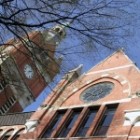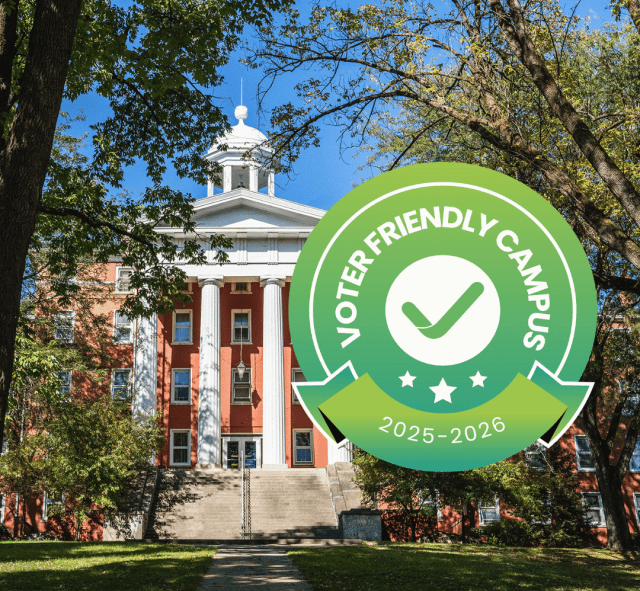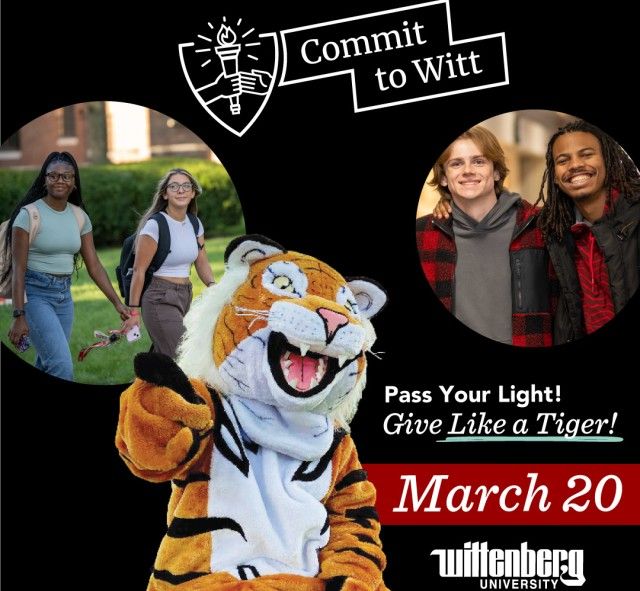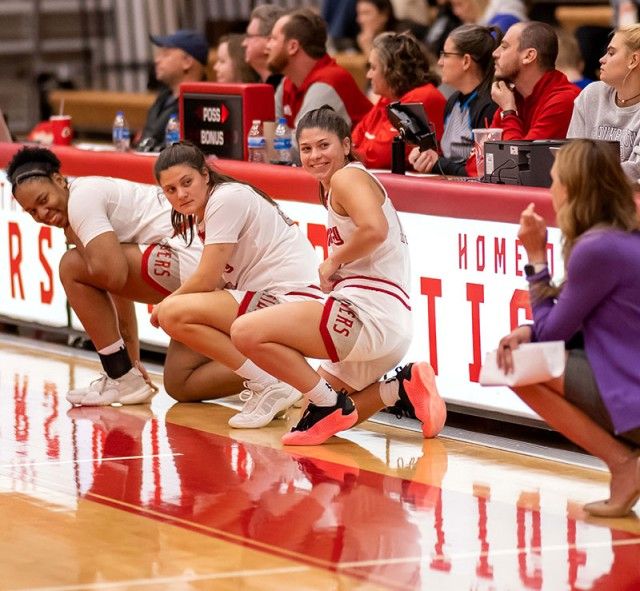When Lisa Simpson, class of 2014 from Thornton, Colo., was in third grade, she visited the University of Denver’s Chamberlin Observatory, and what she saw there sparked an interest that has since landed her a prestigious award from the American Astronomical Society (AAS).
“I looked through the telescope, and there was Saturn. That moment changed me forever,” Simpson said. “After that night, I wasn’t only interested in observing, but I wanted to know why things work the way they do—that’s why I decided to study physics.”
 This summer, Simpson presented at the 222nd Meeting of the American Astronomical Society, June 2-6, in Indianapolis, Ind. The AAS is the premier professional association of astrophysicists in the world, and Simpson received the Chambliss Astronomy Achievement Student Award, the highest award in the field of astrophysics that a student can receive for a single presentation.
This summer, Simpson presented at the 222nd Meeting of the American Astronomical Society, June 2-6, in Indianapolis, Ind. The AAS is the premier professional association of astrophysicists in the world, and Simpson received the Chambliss Astronomy Achievement Student Award, the highest award in the field of astrophysics that a student can receive for a single presentation.
The Chambliss Award recognizes exemplary research by undergraduate and graduate students who present at an AAS meeting poster session. Simpson was one of only three undergraduate recipients.
“I cannot tell you how thrilled I was,” Simpson said. “To have my hard work acknowledged by professionals in the astronomical community was one of the best moments of my undergraduate career.”
Simpson, who is working on a B.S. in physics and math with a minor in computational science, presented research that she developed collaboratively with Visiting Assistant Professor of Physics Ian Hoffman.
“Although I am a radio astronomer, our specific area of research was new to me,” Hoffman said. “By using her training in math, physics and computer science, Lisa was able to draw my career in a new direction in a truly collaborative project.”
Simpson’s research, which was supported by Wittenberg through the department of physics and the Student Development Board, focused in part on extending an existing computational model for maser emission. A maser, which can be thought of as a natural laser, is a source of stimulated spectral line emission that occurs in the microwave region of the electromagnetic spectrum. Using this model, she plans to search a previously un-studied interstellar region and make the first observation of molecule-specific emissions that have yet to be detected astronomically.
“Lisa’s research exemplifies the pursuit of interdisciplinary topics that is afforded by Wittenberg’s close-knit programs,” Hoffman said. “The open lines of support and the lack of barriers between disciplines were necessary ingredients in this success story.”
Since receiving her award, Simpson has continued to generate results and update her research. Recently, she presented an updated poster at the meeting of the Ohio section of the American Physical Society, and she shared her research with President Joyner and the Board of Directors.
Collaborative Learning Environment
Wittenberg’s opportunities for collaborative student-faculty research aren’t just for upper-level students, though.
Spenser Joyce, class of 2016 from Reynoldsburg, Ohio, joined Simpson at the national conference and presented research she conducted as a first-year student.
Joyce worked informally with Hoffman to continue research on interstellar ammonia masers. She analyzed existing data and collected new data from the Green Bank Telescope at the National Radio Astronomy Observatory in West Virginia using Hoffman’s laboratory computer, which is configured to remotely control the telescope. She and Hoffman hope that in the future they can use information gathered from different types of masers to understand conditions inside star-forming regions. Now a second-year student, Joyce is the co-author of a peer-reviewed journal article based on her research.
“For both students, the presentations came near the beginning of the projects,” Hoffman said, “and there are still many big things to come.”
A leader in student-faculty research, Wittenberg annually offers opportunities for students to work side-by-side with full-time professors in the classroom and in the field. Summer research projects are also popular at Wittenberg, a nationally ranked liberal arts institution, which was recently named fourth in the nation for professor accessibility as per the Princeton Review.
Written By: Leigh Hall '13







